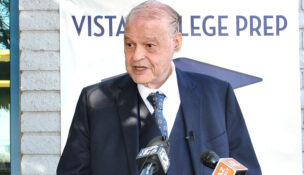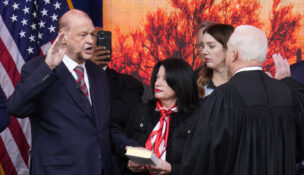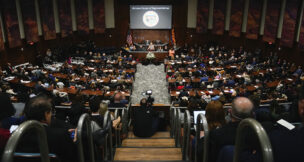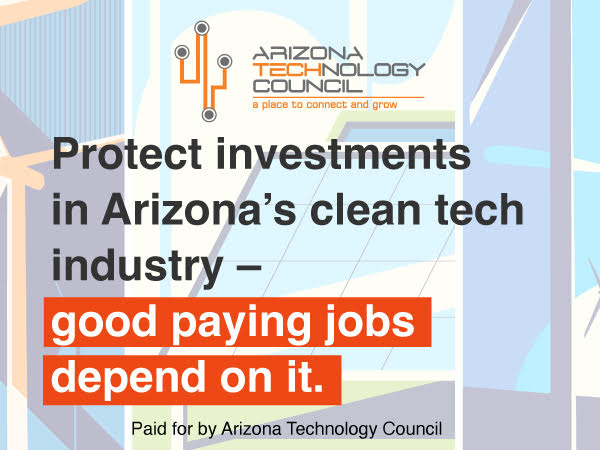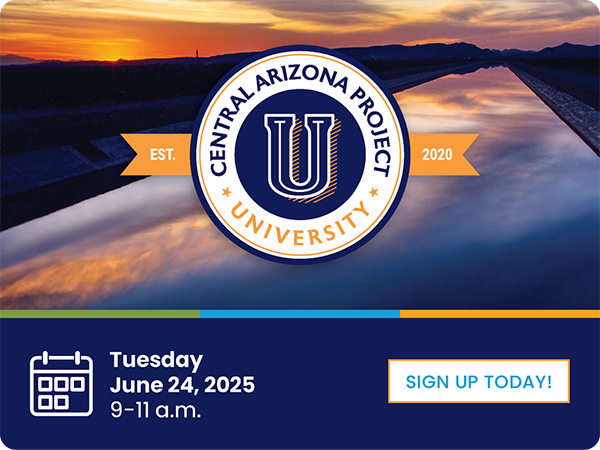Arizona’s K-12 schools sit in the large, looming shadow of federal cuts
Kiera Riley Arizona Capitol Times//July 18, 2025//
Arizona’s K-12 schools sit in the large, looming shadow of federal cuts
Kiera Riley Arizona Capitol Times//July 18, 2025//
Key Points:
-
State budget maintained funding for schools, gave small boosts for certain programs
-
Legislature couldn’t pass extension of Proposition 123 in time
-
State cannot afford to replace federal education cuts
K-12 education funding reaped some slight wins in the Arizona budget this fiscal year, but a growing threat of federal funding cuts could still leave state schools in dire straits.
Lawmakers fully funded districts and charter schools in step with inflation but did not provide much fiscal support beyond the bare minimum, according to education groups. That decision could prove problematic for students, teachers and education officials as investment in public education wanes at the federal level.
“The unfortunate reality is that it’s going to get worse,” Marisol Garcia, president of the Arizona Education Association said. “For us, we realize that the governor does not have and the Legislature does not have the funding or the money that it needs to be able to invest where it wants to. Looking back on this session, this was probably the beginning of a really bad funding discussion.”
This fiscal year, the Arizona Legislature increased the base level, transportation funding levels and the charter school additional assistance amounts by 2% to account for standard inflation, allocated $297 million to school facilities, continued the poverty weight for low income students, and covered the co-pay for students receiving reduced price lunch.
Rep. Matt Gress, R-Scottsdale, said there were a lot of wins for K-12 education in this year’s budget, noting that lawmakers also backfilled about $300 million in funds lost from the impending lapse of Proposition 123 at the end of this fiscal year.
“That was a promise that we made, that we were not going to subject our schools to a fiscal cliff,” Gress said.
He added the two-year waiver of the aggregate expenditure as well.
“That’s the kind of certainty that our schools need when they’re planning their budgets,” Gress said. “So if I were a school finance officer, I would say things have never been better for K-12 schools in Arizona based on the budget that was ultimately passed and signed by the governor.”
Rep. Nancy Gutierrez, D-Tucson, confirmed that education funding was a budget priority for Democratic leadership this year.
“We fought tooth and nail to get as much money for public schools. In a perfect scenario, we would have funded a lot more money, but we don’t have a majority,” Gutierrez said.
“I would have loved for it to be more. I was actually really proud of what we were able to accomplish. It’s kind of disheartening, too. I’ve heard it called crumbs. I understand that. We all want more money for public education.”
But Beth Lewis, executive director of Save Our Schools, said the funding was far from a departure from the status quo.
“There’s absolutely nothing to move our K-12 schools forward,” Lewis said. “They met their constitutionally obligated 2%, but that’s it. There’s just no effort to prioritize public education at the Capitol and it’s really disappointing.”
For those who believe the state isn’t doing enough, the future of K-12 funding in Arizona looks even more stark after a quick view of the federal landscape. Though no true cuts have come to fruition yet, the U.S. Department of Education put about $6 billion in education grant funding nationwide on hold, including a more than $124 million impact in Arizona, according to the Arizona Department of Education.
Impacted programs include professional development and educator training, migrant education, English Language Learner instruction, tutoring and afterschool programs.
Doug Nick, spokesperson for Arizona Department of Education, said the largest group of local education agencies, comprising about 627 districts or charters, was hit by holds to Title II funding for training and professional development, with an average allocation of $65,000.
Gov. Katie Hobbs sent a letter asking the department to reconsider the hold on funds, noting that districts may have to eliminate positions, including school counselors and instructional coaches, and compromise afterschool programs, such as the Boys and Girls Club and the Arizona Center for After School Excellence, which expect to see significant budget cuts.
In her message to the U.S. Department of Education, Hobbs outlined the state’s inability to cover the shortfall.
“Our state budget simply does not have the capacity to backfill a federal freeze of public funding of this magnitude,” Hobbs said.
Lewis outlined some of the consequences.
“You’re going to see more schools shut down. We’re going to see more school districts have to lay off teachers and cut programs that people truly care about and honestly, programs that are mandated.”
She continued, “If you legally need to serve English language learners and there’s no funding to serve them, that creates an unfunded mandate,” Lewis said. “Schools are basically looking at more and more laws and exactly what they must do without funding coming in to do it.”
Lewis added that federal cuts are coming at the end of a COVID relief surplus, as well as both a state and federal shift to ensure funding for school choice programs.
“It’s a perfect storm that has been brewing for quite some time,” Lewis said. “We might have been in the eye, and now it’s like the wall is coming for us.”








